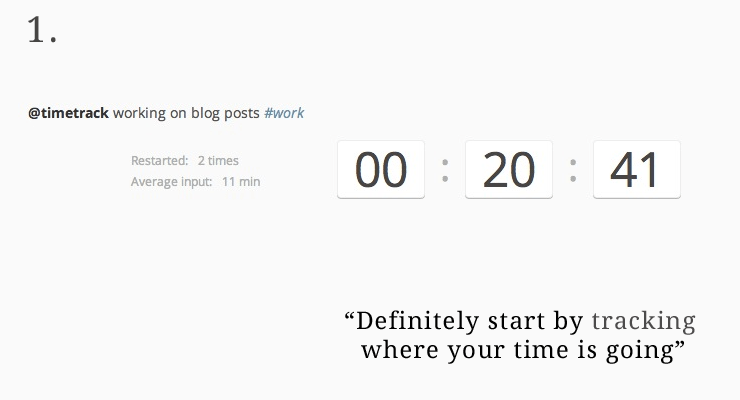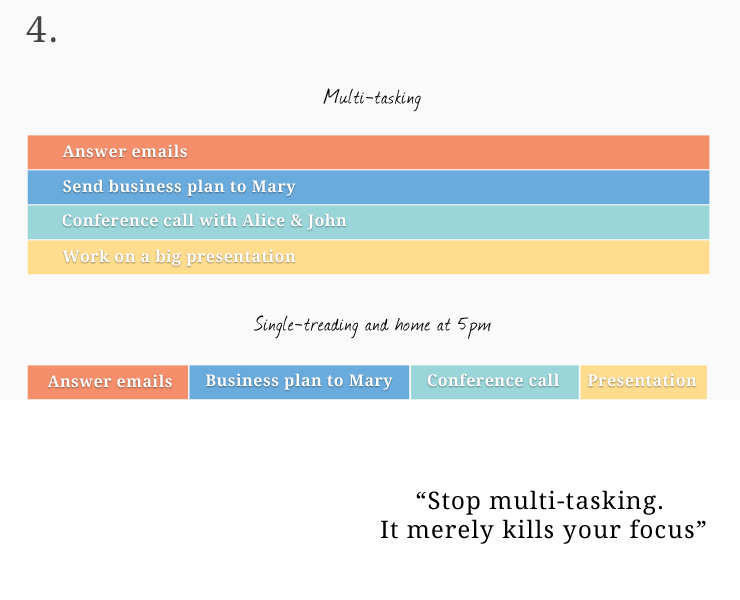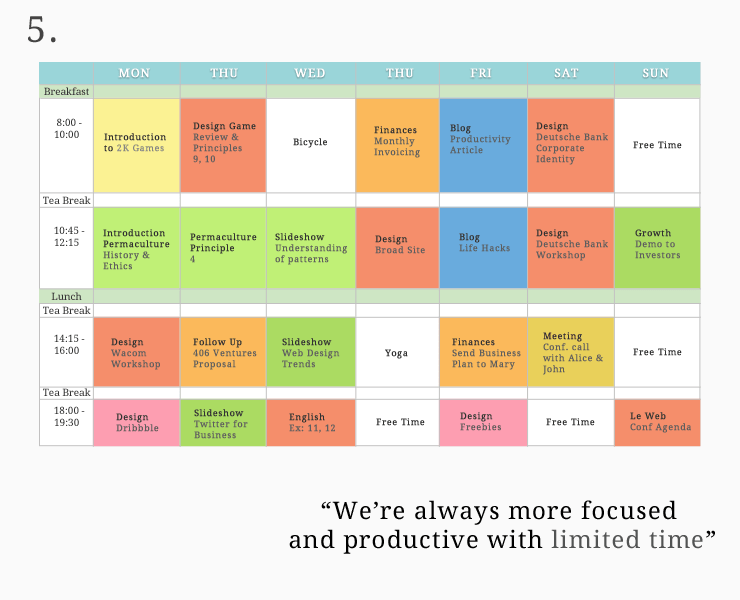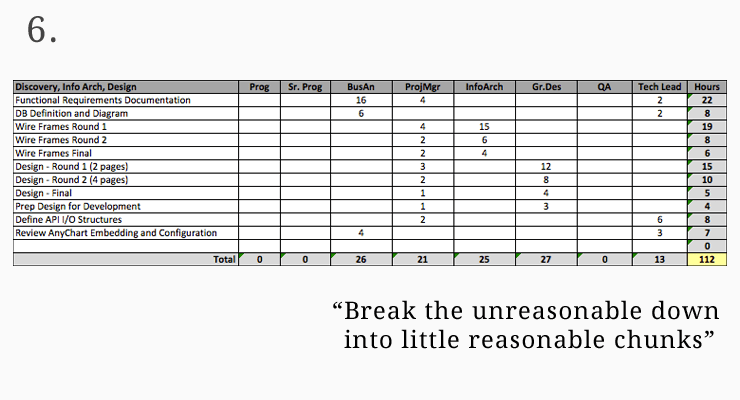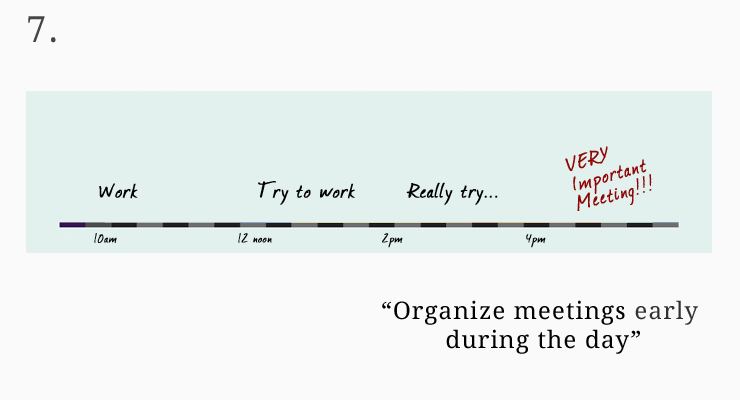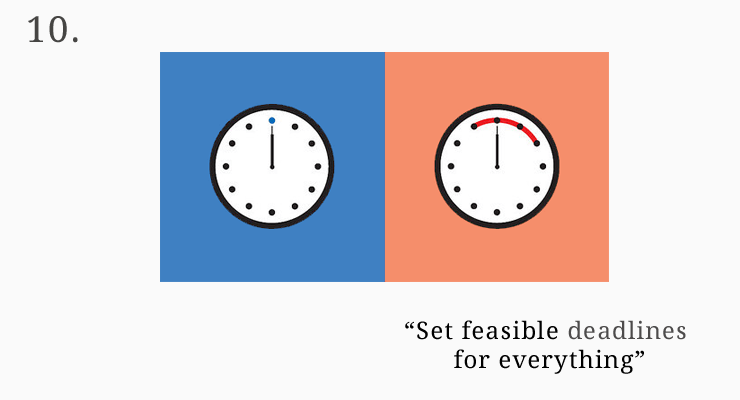Have you ever noticed that you get constantly distracted by interruptions? Researches show that in the office environment, we have less than 15 minutes on any given task before being interrupted. And even more upsetting is that it takes the same or even more time to get back to the task. It could take you 3 hours to get an hour-long work done. Switching between tasks trying to complete them faster won’t get you far. As a result, your 8-hour workday at the office boils down to 2 or max 3 hrs of actual productive time that is still too fragmented and doesn’t allow you to be truly focused. Here are 10 simple time management strategies on how to significantly increase your productivity.
Everhour helps you stick to the planned tasks instead of moving from task to task until your working day is over. Looking at your time entries, you get a better understanding of your working pace. When you’re able to estimate the time required, you can make the most of your working hours and complete the original plan without missing the deadlines. Moreover, tracking time ends up being a habit of scheduling your activities thus helping you become more organized & allocate your time rather than waste it.
Everhour is the top choice for small businesses and small to mid-size teams of 5 to 50 members, including professionals like software developers, marketers, designers, consultants, lawyers, you name it!
Seamlessly integrating with popular project management tools like Asana, Trello, and Jira, its user-friendly interface and customizable reports make it the ultimate time tracking solution for small and mid-size teams.
With dedicated support ensuring you receive timely assistance, our team is here to help you promptly and with a smile!
You can always make necessary adjustments to streamline your processes/re-allocate your time. You may be surprised at how much time various tasks actually take.
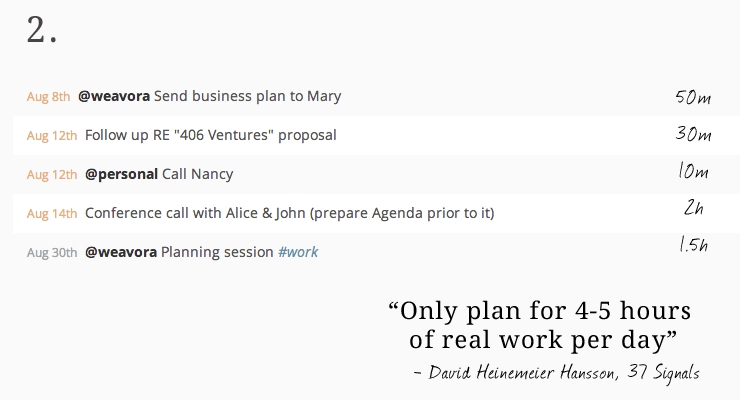
As stated above, days always fill up quickly. Very few people work full 8 hours a day. You’re lucky if you get a few good hours in between all the meetings, interruptions, web surfing, office politics, and personal business interfering with a typical workday. If supposing that you do have 8 hours at your disposal, you’ll keep missing the deadlines.
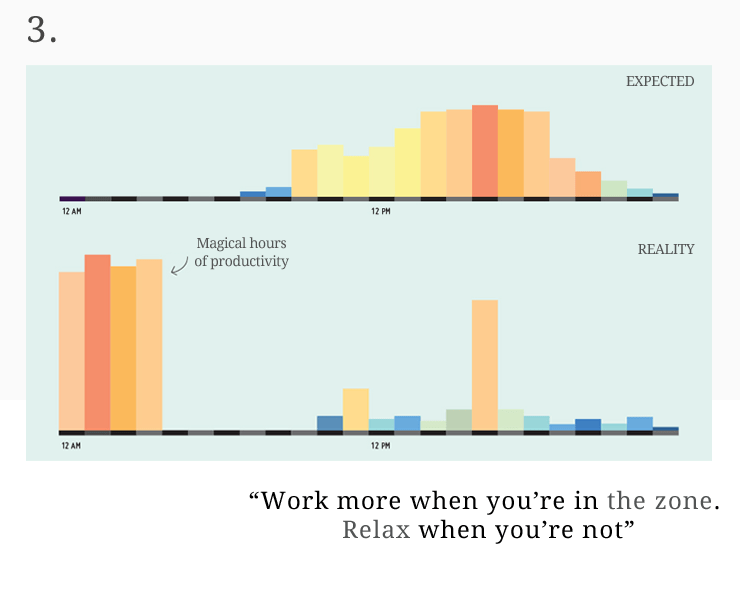
It’s about a “zone”, or a flow, whatever you call it. It includes hours when we do our best work, achieve our peak performance. It is a time when everything comes together easily. You are focused and sometimes it is easy to spend several hours productively without even realizing the time has passed. It’s OK to have days when you just don’t feel like working and those when you work 12 hours straight.
Good advice. One of the biggest obstacles to getting into the “zone” is various notifications. Follow Joel’s advice on Zero Notifications. Seeing notification icons on your phone or computer always makes you lose your focus. If you haven’t tried this yet, just turn off every single notification on your devices and you’ll feel the magic.
What you call multitasking is actually task-switching. Moving back and forth between several tasks cuts productivity because your attention is scattered between different activities and the act of switching itself. Plus, you never fully get “in the zone” for any task.
As opposed to popular thinking, multitasking doesn’t save time. In fact, it will probably take you longer to finish two projects when rushing between them than to complete them separately, one by one. What tends to save the most of your time is doing things in batches. Experts prove that switching between tasks can cause a 40 percent loss in productivity.
It can also cause you to make more mistakes in whatever you’re working on, especially if your activities involve a lot of decision-making or critical thinking.
Multitasking requires a lot of what’s known as “working memory”, or temporary brain storage. Completely using it up can eliminate your ability to think outside the box.
Have you ever come to the conclusion that the less time you have, the more you can manage to do? Sounds weird? But it proves to be true. People tend to procrastinate everything from cooking breakfast to finishing up an important presentation. However, once you have a time limit for a big workload, you can summon up your inner resources to have everything done on time.
As soon as you have your list of activities and tasks ready, make a schedule for the coming week. Make sure to leave some hours vacant for unexpected events and have short breaks in-between the activities. The key to high productivity and getting things done faster is being realistic, planning, and knowing what you do.
A big goal is achieved by accomplishing little everyday steps getting you closer to it. Break tasks down into hour increments. Long tasks are usually hard to get down to while small ones look pretty accomplishable.
Such an approach also results in better estimating costs, risks, and time because you can move from smaller tasks up to the level of the entire project. Finally, it allows you to double-check all the deliverables specifics with other people and make sure nothing is missing or overlapping.
The time preceding an important event is often wasted. Having a meeting the first thing in the morning is ideal, as thanks to short stand-up meetings or calls the team can understand whether things are going smoothly in the project. Once the meeting is over, people won’t have to worry about being distracted during the day.
Besides, most people are usually full of energy in the morning. This makes for a more productive meeting with greater involvement and a deeper understanding of the issues being discussed.
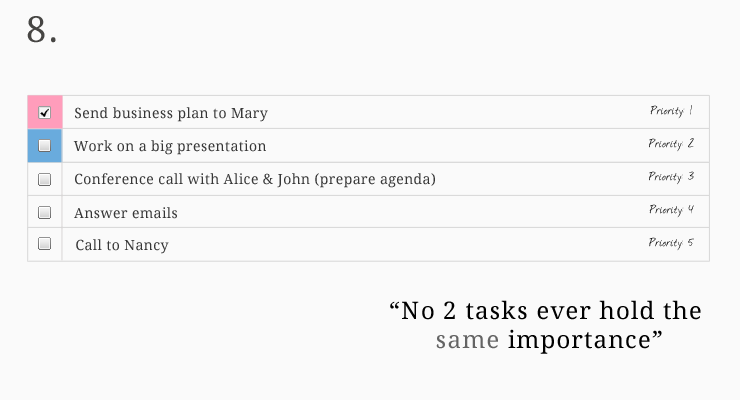
Always prioritize. Since we are overwhelmed by things to do, it’s better to learn how to prioritize effectively. There are a number of different methods and tips you can use. No one can tell you which one works best, you have to figure that out yourself. Learn how to manage your time and prioritize tasks in our thorough guide!
“Eat that frog” (Amazon). The essence of this method is to start with your biggest and most important task, also known as your “frog”. This is often something you dread the most and postpone for as long as you can.
The A-B-C-D-E method. To use this method, write down all your “to-do’s” and then categorize them using the letters:
- A: A very important task that you must do. There will be negative consequences if you put it off.
- B: A task that is important, but not as important as your “A” tasks. There might be consequences if you don’t do it, but the impact is not as big.
- C: A task that is “nice to do” but not as important as your A and B tasks, and there are no negative consequences of not completing it.
- D: A task that you should delegate.
- E: A task that should be eliminated whenever possible.
Go through your list marking the tasks with A1, A2, B1, B2, B3, C1, C2, etc.
80/20 rule. Start looking at your work with 80/20 rule “eyes”: identify those 20% tasks that are crucial for your business and focus on these since they will give you 80% positive results.
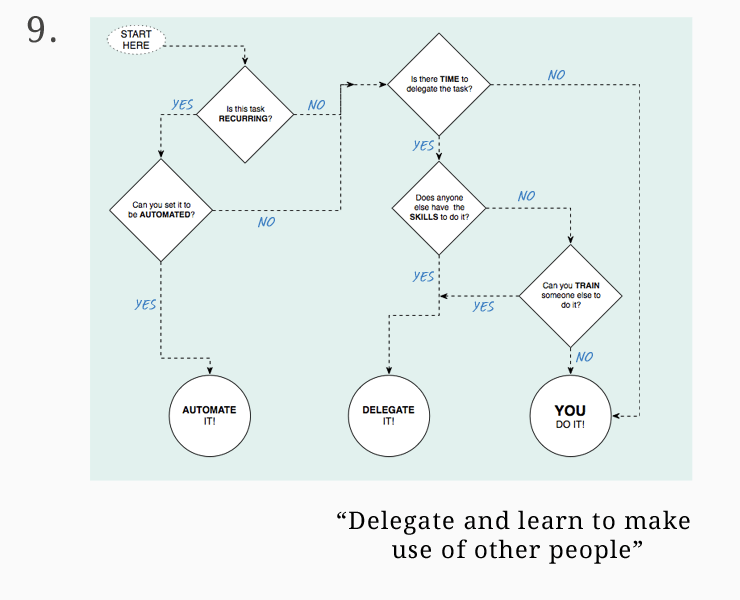
The delegation will free up your time so that you can focus on what you do best. But keep in mind that a person delegating a task still remains responsible for it. There are 4 time management strategies that will let you delegate while maintaining your control.
1. Develop a delegation process. This is about figuring out what works for you. With a bit of elbow grease, you will learn how to delegate with ease while maintaining your desired level of control.
- Develop requirement criteria for people you involve in your tasks/projects
- Pre-schedule ongoing project check-ups
- Combine project management and meeting tools
2. Hire people you trust. One of the most important factors is being confident about the candidates’ abilities and trusting them not to spoil your reputation.
3. Make sure you have enough time to delegate. Make sure there is time for training and changes if required. This is the hard part about delegating. People often do not delegate just because it is time-consuming to explain the task to another person. When the time comes, a delegate may fall short.
4. Honestly communicate. Always check that the job is being done the way you need it and answer any questions as they come up. Communicate expectations clearly and give open and honest feedback.
Don’t let tasks go on for an indefinite period of time. Set end dates for intense or stressful activities. Everything should end at some point.
Let’s accept the fact that a deadline is simply a means of scheduling your time and since it is limited, we have to spend it wisely. Without establishing deadlines, we could just put things off forever accomplishing very little in life. It’s as simple as that:
no deadline – no real incentive to get things done.
More benefits of deadlines:
- You make a schedule for being productive
- They increase your work ethic and discipline
- You’re consistently moving closer to your goals
- Deadlines give you a tremendous feeling of accomplishment
- They keep procrastination away
- Setting deadlines prevents an overloaded work schedule
Time Management Strategies: Final Word

The most important time management strategies are pretty simple: rewarding is really crucial because without it you’ll probably just feel exhausted, miserable, and burnt out. Time management skills don’t develop on their own, you have to work for them – so don’t forget to give yourself a pat on back from time to time. Rewards refuel you and are key engines of productivity. You know what they say: work hard, play hard 🙂
What time management tips or best time management apps work best for you? Share your experience!
Discover the true cost of untracked time in project-based businesses — and learn how to stop revenue from slipping through the cracks.
Struggling with missed deadlines or team slowdowns? Learn how to spot productivity bottlenecks before they derail your projects.

